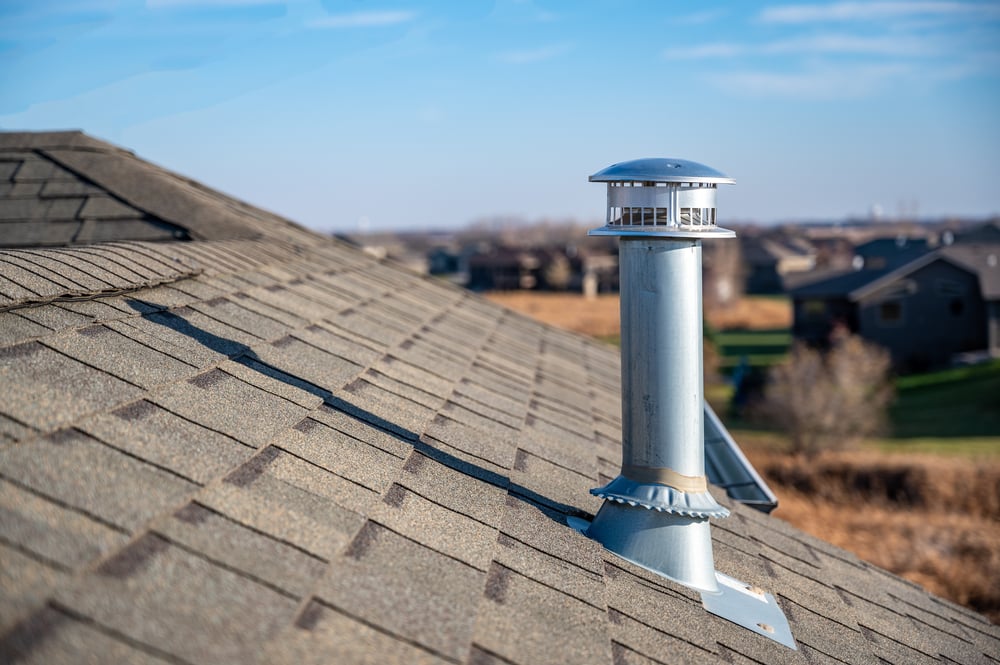Just about everyone seems to have their private conception involving Why Plumbing Air Vents Are Important.

Proper ventilation in pipes systems is typically neglected, yet it is critical for preserving the performance and safety of your home's plumbing. Ventilation assists regulate atmospheric pressure, stop the buildup of unsafe gases, and make certain the effective elimination of waste. In this guide, we will certainly discover the relevance of proper plumbing ventilation, how it functions, and the benefits it offers your plumbing system.
Exactly How Air Flow Functions in Plumbing Solutions
Air Pressure Guideline
Proper air flow maintains well balanced air pressure within the pipes system. When water flows through pipes, it displaces air. Without sufficient air flow, this displacement can create negative pressure, leading to slow drains pipes or siphoning of water from catches, which can trigger undesirable odors to leak into the home.
Stopping Sewer Gas Accumulation
One of one of the most crucial features of plumbing vents is to avoid sewage system gases, such as methane and hydrogen sulfide, from collecting within the home. These gases can present major health threats and are highly combustible. Vent pipelines permit these gases to run away securely outdoors.
Aiding in Waste Elimination
Ventilation assists in the reliable elimination of wastewater by avoiding airlocks in the drainage system. When air can move openly through the vents, it permits water and waste to stream smoothly through the pipelines, minimizing the threat of clogs and backups.
Benefits of Proper Ventilation
Boosted System Performance
Effectively aerated plumbing systems operate extra efficiently, with fewer obstructions, faster draining, and less stress on the pipes. This efficiency extends the lifespan of the pipes system.
Improved Air Top Quality
By preventing drain gases from entering your home, correct air flow contributes to far better indoor air quality, making your living setting healthier and a lot more comfortable.
Protecting Against Water Damage
Sufficient ventilation aids avoid water from being siphoned out of traps, which can cause sewer gases entering the home and creating water damages gradually.
Actions to Make Sure Appropriate Air Flow
Consulting Plumbing Codes
Always get in touch with regional pipes codes when designing or modifying your pipes system. These codes offer the necessary standards for proper venting and guarantee your system satisfies safety and security standards.
Normal Inspection and Maintenance
Normal examinations can assist determine possible air flow problems before they become major issues. Upkeep tasks, such as cleansing vent pipes and checking for blockages, are vital for keeping the system in good working order.
Specialist Setup
For brand-new setups or significant modifications, it's wise to work with a specialist plumbing professional. They have the expertise to guarantee the air flow system is appropriately designed and set up according to code.
Recognizing Air Flow in Plumbing
Ventilation in pipes describes the network of pipes that permit air to move via the water drainage system. These vents offer numerous functions, consisting of managing atmospheric pressure within the pipelines, stopping sewage system gases from going into the home, and aiding in the smooth flow of wastewater.
Types of Plumbing Vents
Main Heap Vent
The main pile vent, additionally referred to as the air vent pile, is the primary vent in a pipes system. It prolongs from the primary drain line up through the roof, enabling gases to leave and fresh air to get in the system.
Branch Vent
Branch vents connect to the primary pile air vent and offer individual fixtures, such as sinks, toilets, and showers. These vents make sure that each fixture has appropriate ventilation to function properly.
Air Admittance Valve (AAV).
An Air Admission Valve (AAV) is a one-way valve that permits air to enter the pipes system without the need for a standard air vent pipeline extending through the roofing. AAVs are typically made use of in improvements or areas where mounting a basic air vent is not practical.
Signs of Poor Air Flow in Plumbing.
Slow Draining Fixtures.
If your sinks, tubs, or toilets are draining gradually, it could be an indication of poor air flow. Insufficient air circulation can create a vacuum result, making it challenging for water to drain effectively.
Gurgling Seems.
Gurgling sounds coming from drains are frequently an outcome of air being sucked via water catches due to adverse pressure in the pipes. This is a clear sign of insufficient air flow.
Unpleasant Odors.
Drain odors inside your home are a warning that your plumbing system is not effectively aerated. This can indicate that sewer gases are not being properly aired vent outside, causing potentially harmful conditions.
Usual Ventilation Mistakes.
Inadequate Vent Sizing.
Using undersized vent pipelines can lead to inadequate air flow and stress inequalities in the system. It's necessary to make use of vents that satisfy the certain needs of your pipes system.
Improper Vent Positioning.
Placing vents too much from the components they offer can minimize their efficiency. Appropriate placement guarantees that air can flow freely and effectively via the system.
Ignoring Code Needs.
Building ordinance supply certain guidelines for plumbing ventilation. Neglecting these codes can lead to a system that stops working to work properly and might bring about pricey repair work or health hazards.
Final thought.
Proper air flow is a vital element of any kind of pipes system, ensuring that it functions efficiently and safely. By understanding the importance of ventilation, acknowledging the indications of poor ventilation, and taking steps to maintain your system, you can prevent pricey problems and safeguard your home's air high quality.
4 Things You Should Know About Your Plumbing Vents
What Plumbing Vents Are
Also called a vent stack, a plumbing vent is a vertical pipe attached to your drain line that runs through your roof. The plumbing vent pipe, or plumbing air vent, removes gas and odors from your plumbing system and allows fresh air to enter the pipes, helping the water to flow out of the drain pipes.
What Plumbing Vents Do
Plumbing vents have two basic functions. One of which is to allow unpleasant smelling wastewater and sewer gasses to escape your plumbing system instead of entering your home. Plumbing vent pipes are typically located on roofs, away from windows, to ensure the fumes exit the home completely.
The other function of the plumbing vent is to move fresh air into your plumbing system. This helps move water through every plumbing fixture in your house, like toilets and sink drains. Think of the way in which you need to let a little air into the bottle as you pour soda in order to make the drink flow smoothly.
Different Types of Plumbing Vents
- True vent: This is the most common vent option. In simplest terms, a true vent is a vertical pipe attached to your drain line that exits through the roof. They often function as the main vent that other fixtures can connect to.
- Re-vent pipe or auxiliary vent: Attached to the drain line near specific plumbing fixtures, re-vent pipes run up and over to connect to the main vent.
- Common vent: Two plumbing fixtures installed on opposite sides of a wall are typically tied into the vent stack using something known as a sanitary cross.
- Wet vent: This venting option operates as a drain pipe and a vent at the same time. Wet vent drainage systems drain water from one fixture while venting the air from another. Although they’ve been used for over 100 years, wet vent systems have only recently been added to the plumbing code in many areas. If you’re planning on installing one in a bathroom remodel, make sure you check your local code prior to construction.
- Loop vent: For free-standing fixtures like kitchen island sinks, loop vents are ideal. These vent pipes run under the floor, rise from the P-trap, and create a loop inside the cabinet sink.
- Air admittance valve: An AAV is a one-way mechanical valve typically installed at the site of the plumbing fixture. AAVs allow venting to occur without having to tie into a larger venting system. They’re ideal for venting fixtures where you aren’t able to easily connect to an existing vent system.
Common Plumbing Vent Issues
Although vent pipes typically don’t have water flowing through them, they’re still subject to many typical plumbing issues. For example, clogs are one of the most common problems associated with sewer vent pipes. If your vent pipe gets clogged, all of your plumbing fixtures tied into the vent stack will be affected.
A sink with a slow drain that bubbles and gurgles or a strong sewage smell around your toilet are both indicators that your toilet vent pipe is clogged. Because most vent pipes exit through the roof, old leaves, twigs or even a bird’s nest could be clogging the pipe.
Clogs in your vent pipe system cause a buildup of negative pressure, meaning that water won’t be able to flow out of your home very well. It’s similar to putting your finger over the opening of a straw to trap water inside. When you remove your finger, the water is able to flow out of the straw.
If you suspect you have any blockage in your vent, make sure you have a professional come examine the situation. Left unchecked, a blocked air vent can lead to other costly repairs, like leaks and sediment buildup.
Under Pressure
Pipe vents are essential aspects of a home’s plumbing system. Owning a home means learning about all sorts of things you never put much thought into before. But by understanding as much as you can about the important systems of your home, you can keep those budgets intact and those anxiety levels low.
https://www.homeserve.com/en-us/blog/home-improvement/plumbing-vents/

We had been introduced to that report on Essential Plumbing Vent Pipes: Understanding Their Role through a friend on our other domain. Kindly take the opportunity to promote this blog post if you enjoyed reading it. Thank-you for going through it.
Source
Comments on “Why Correct Ventilation is Vital for Plumbing Systems”